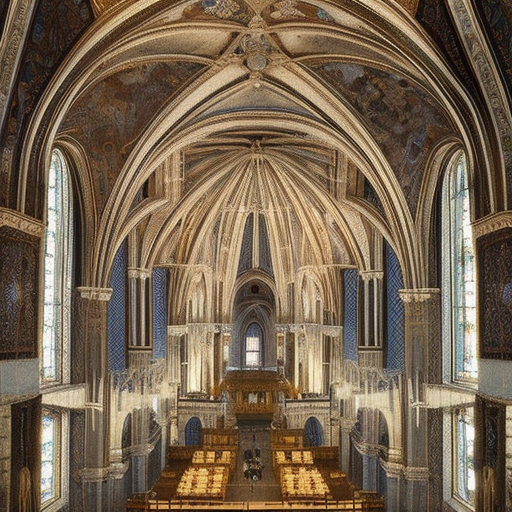Renaissance Architecture:
Renaissance architecture refers to the architectural style that emerged in Europe during the Renaissance period, which spanned from the 14th to the 17th century. It was characterized by a revival of classical Greek and Roman architectural principles and a shift away from the Gothic style that dominated the Middle Ages.
Key Characteristics of Renaissance Architecture:
- Classical Influence: Renaissance architects drew inspiration from the architectural forms and principles of ancient Greece and Rome. They sought to revive the classical style by incorporating elements such as columns, arches, and domes into their designs.
- Proportion and Symmetry: Renaissance architects emphasized proportion and symmetry in their buildings. They used mathematical ratios, such as the golden ratio, to create harmonious and balanced compositions.
- Humanism: Humanism, a cultural movement that emphasized the importance of human achievements and potential, greatly influenced Renaissance architecture. Buildings were designed to reflect the human scale and to enhance the experience of the individual.
- Use of Classical Orders: Renaissance architects employed the classical orders, including Doric, Ionic, and Corinthian, to create visually pleasing and structurally sound buildings. These orders provided a system of proportions and decorative elements for designing columns and capitals.
- Centralized Plans: Renaissance architects favored centralized plans, such as the circular or octagonal shapes found in ancient Roman buildings like the Pantheon. These plans allowed for a more unified and balanced spatial arrangement.
- Domed Structures: The use of domes became prominent in Renaissance architecture, influenced by the dome of the Pantheon in Rome. Architects like Filippo Brunelleschi and Michelangelo created innovative dome designs that became iconic symbols of the period.
Key Examples of Renaissance Architecture:
- Florence Cathedral: The Florence Cathedral, also known as the Duomo, is a prime example of Renaissance architecture. Designed by Filippo Brunelleschi, its dome is considered a masterpiece of engineering and a symbol of the city.
- St. Peter’s Basilica: Located in Vatican City, St. Peter’s Basilica is one of the most renowned examples of Renaissance architecture. Designed by Donato Bramante, Michelangelo, and others, it showcases the grandeur and elegance of the period.
- Palladio’s Villas: Andrea Palladio, an influential Renaissance architect, designed numerous villas in the Veneto region of Italy. His villas, such as Villa Rotonda and Villa Barbaro, exemplify the harmony, proportion, and symmetry of Renaissance architecture.
- Château de Chambord: The Château de Chambord in France is a notable example of Renaissance architecture outside of Italy. Its distinctive French Renaissance style combines classical elements with French Gothic influences.
- Palazzo Rucellai: Designed by Leon Battista Alberti, the Palazzo Rucellai in Florence showcases the principles of Renaissance architecture. Its facade features classical elements, such as pilasters and cornices, arranged in a harmonious and balanced composition.
Legacy of Renaissance Architecture:
Renaissance architecture had a profound and lasting impact on the development of Western architecture. Its emphasis on classical forms and principles laid the foundation for subsequent architectural movements, such as Neoclassicism. The revival of classical architecture during the Renaissance also influenced other art forms, including sculpture and painting. The legacy of Renaissance architecture can be seen in iconic buildings around the world, which continue to inspire architects and captivate visitors with their beauty and grandeur.












